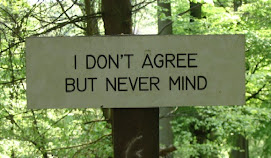If you've ploughed through posts 1 & 2, you'll have an understanding of how it can be difficult for a driver to see you.
There is a 'heirachy' which goes from worst to best case:
1. The driver doesn't look
2. The driver looks, doesn't see you because you're hidden from view
3. The driver looks, sees you, incorrectly assesses your speed
4. The driver looks, sees you, asesses your speed correctly, makes an incorrect decision to pull out
5. The driver looks, sees you, assesses your speed correctly, makes the correct decision on whether there is enough room to pull out
There is, of course, a number 6:
The driver looks, sees you, assesses your speed correctly, makes the correct decision on whether there is enough room to pull out, but pulls out anyway because you're only a bike. This happens . . .
So you, as a rider, need to be prepared, you need to take responsibility for what may happen, and do sufficient to stop it happening or reduce the severity of the outcome.
You may not want to - after all, you have 'right of way' - but to ignore the fact that these crashes happen is to ignore reality.
So what action can you take?
Improve conspicuity
This might include using daytime lights & hi-viz clothing. But doing so can lead to risk compensation, where you accept more risks because you feel safer (it used to be known as the 'Volvo effect'). Certainly I've heard riders say "He must have seen me - I had my headlamp on!" Err . . . no.
Can you see the driver? If not, they probably can't see you. Can you see their eyes, or how their hands are moving on the controls? Can you see the front wheel of the car - is it turning? It's one of the best signs that a car is starting to move.
A better way to improve conspicuity is to position yourself where you can be seen - avoid those 'traps' mentioned earlier of door pillars, street furniture, etc.
Position so you can be seen between other traffic: if you're in a row of cars heading along a road, you may see over the cars to teh other car in the side road, but will the driver of that car just see a gap in the traffic?
Positioning on the lane width can help - we'll return to this in detail, as it's one of the two main elements of the Z Line.
Your Speed
What speed are you doing? Drivers will look for traffic doing the speed they expect to see, and look within the distance they expect that traffic to be. If you're travelling particularly faster than they might expect, then slow down.
Also, slowing just slightly has a great effect on your stopping distance. The Highway Code figures - however out of date, they're as a good a guide as any - tell us that at 30 mph 75 feet is needed to stop, while at 40 mph - just 10mph faster - that distance has almost doubled to 120 feet. Indeed the actual 'stopping' element rises from 45 feet to 80 feet - almost doubling!
Of course, be wary of the 'message' you're giving the driver; if they see you slow, will they take that as a 'Pull out' message?
Controls
As well as slwing slightly, cover the brakes, if the situation looks really dodgy then start to 'take up the slack'. Doing this will reduce your reaction time. Typical reaction time means that at 30mph you'll travel 30 feet before you actually begin to slow . . .
Reaction time is said to be in two parts:
- Decision Time, when you decide what to do
- Response Time, when you move to the controls
However, there's a third, over-looked, part, what a friend termed the "Oh !*!*!" distance - when you can't believe what you're seeing, let alone decide what to do or respond. Indeed, some people 'freeze' at the controls and never get past this 'reaction'.
If you're prepared for a driver to pull out, then you dramatically reduce your rection and response time, and you've already taken car of the "Oh ____" distance.
Indeed, if you're prepared to brake, then your braking is more likely to be 'apply' rather than 'grab'. Take this a stage further, are you prepared for skidding, and prepared for the action to take?
Finally: are you prepared for the worst? If you're going to impact, how will you deal with that? More here on the Jump! I've used it, it works!
.
Sunday, 24 August 2008
Subscribe to:
Post Comments (Atom)





No comments:
Post a Comment